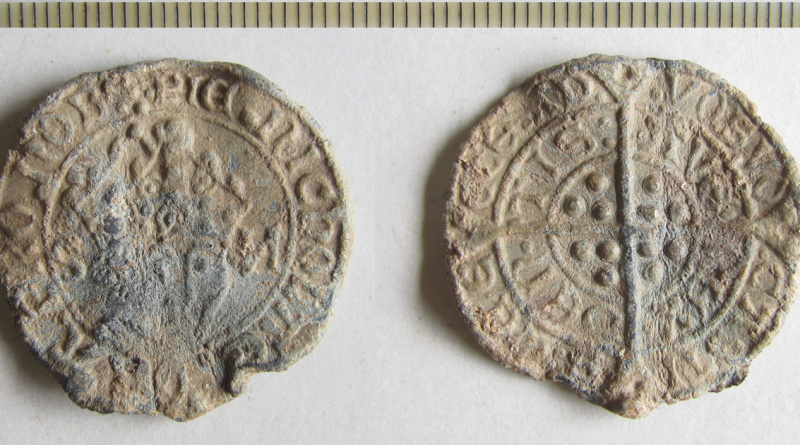Boy Bishop Token
This token
Groat sized Boy Bishop token. The legend on the obverse reads PIE nIChOLAE ORA PRO nOB, “Holy Saint Nicholas, pray for us“. The legends on the reverse read VOS VOCASTIS mE ECCE AD “You have called me – behold, I am here”, and on the inner ring, AVE REX GEnTIS “Hail, the King of the people”.
Boy Bishop
The Boy Bishop tradition was widespread throughout England in the late medieval period. On 6 December, the feast of Saint Nicholas (patron saint of children), a boy would be elected to symbolically take the place of the adult bishop. His authority lasted until 28 December, Holy Innocents Day.
Henry VII supported the tradition and would present money to his “St Nicholas Bishop”, a boy chosen from the choirboys of the Chapel Royal. However, Henry VIII put an end to it. It appears that he believed that it could be seen as mocking Church authorities and therefore the king himself, as he was now head of the Church. It made a brief return in Mary’s reign before being banned again by Elizabeth I.
Production of tokens
Although the Boy Bishop tradition was widespread, most Boy Bishop tokens were manufactured at Bury St Edmunds Abbey. The part of the legend AVE REX GEnTIS refers to an anthem sung there. There are some 450 Boy Bishop tokens recorded on PAS and all but a few were found within 40 miles of the Abbey.
They were produced in denominations of penny, half groat and groat. They would be distributed by the Boy Bishop to local children and the poor who could redeem them for sweetmeats and alms at the Abbey or the local St Nicholas Guild.

